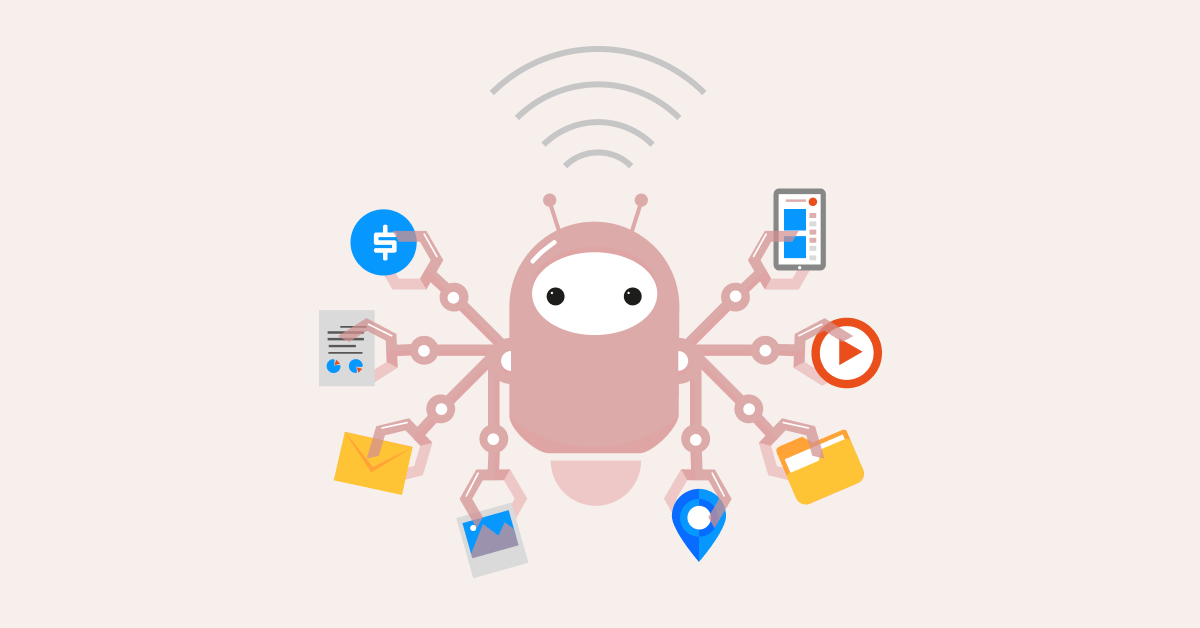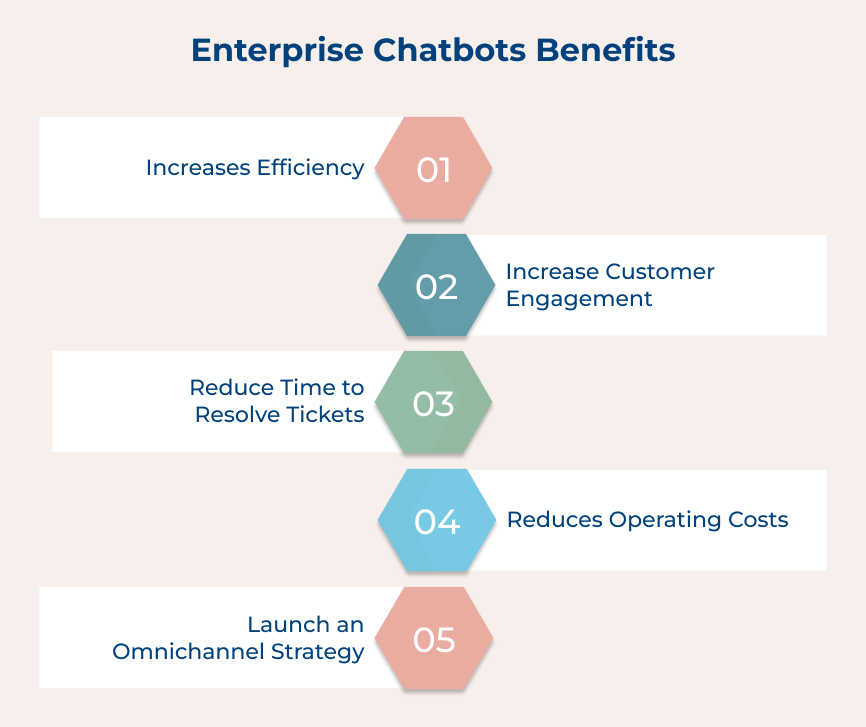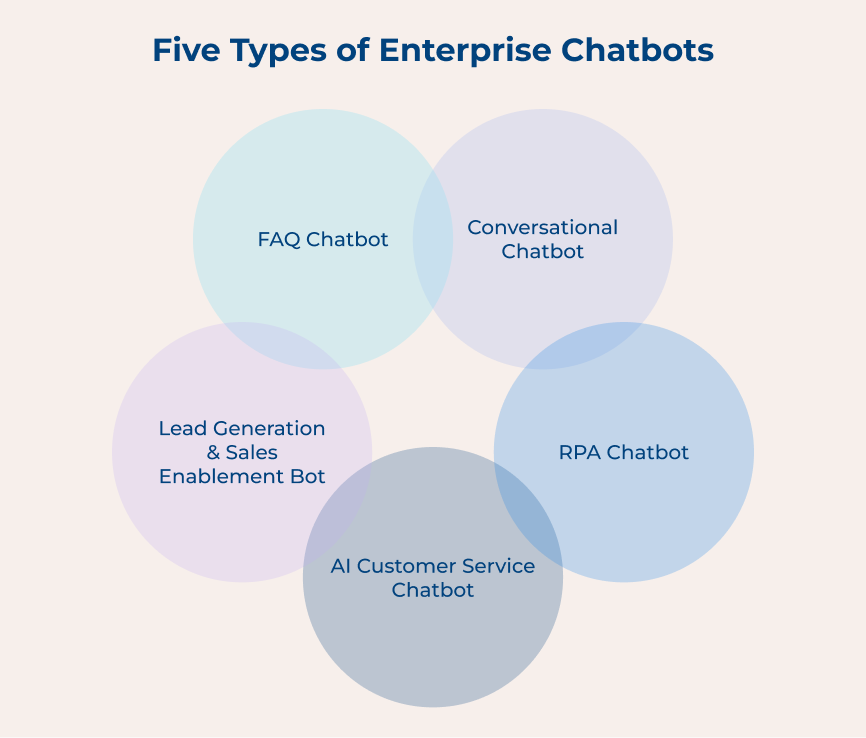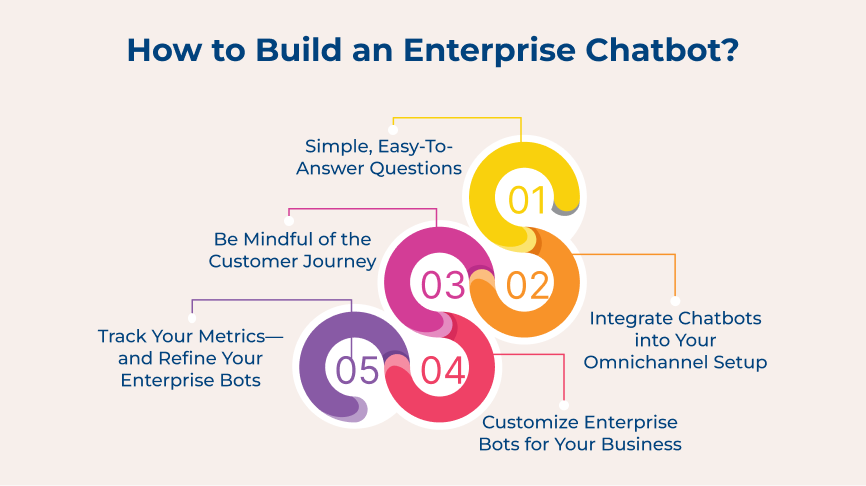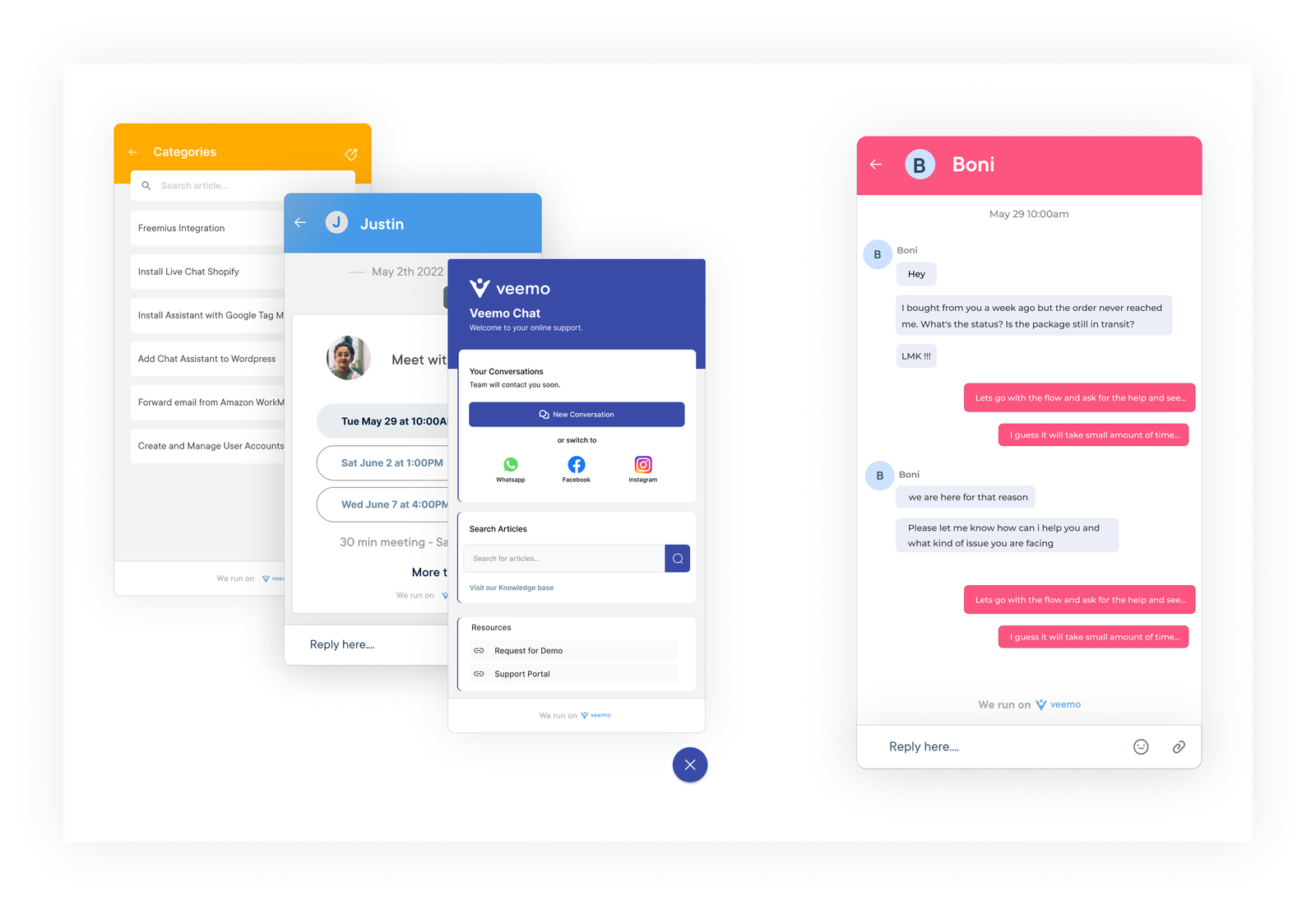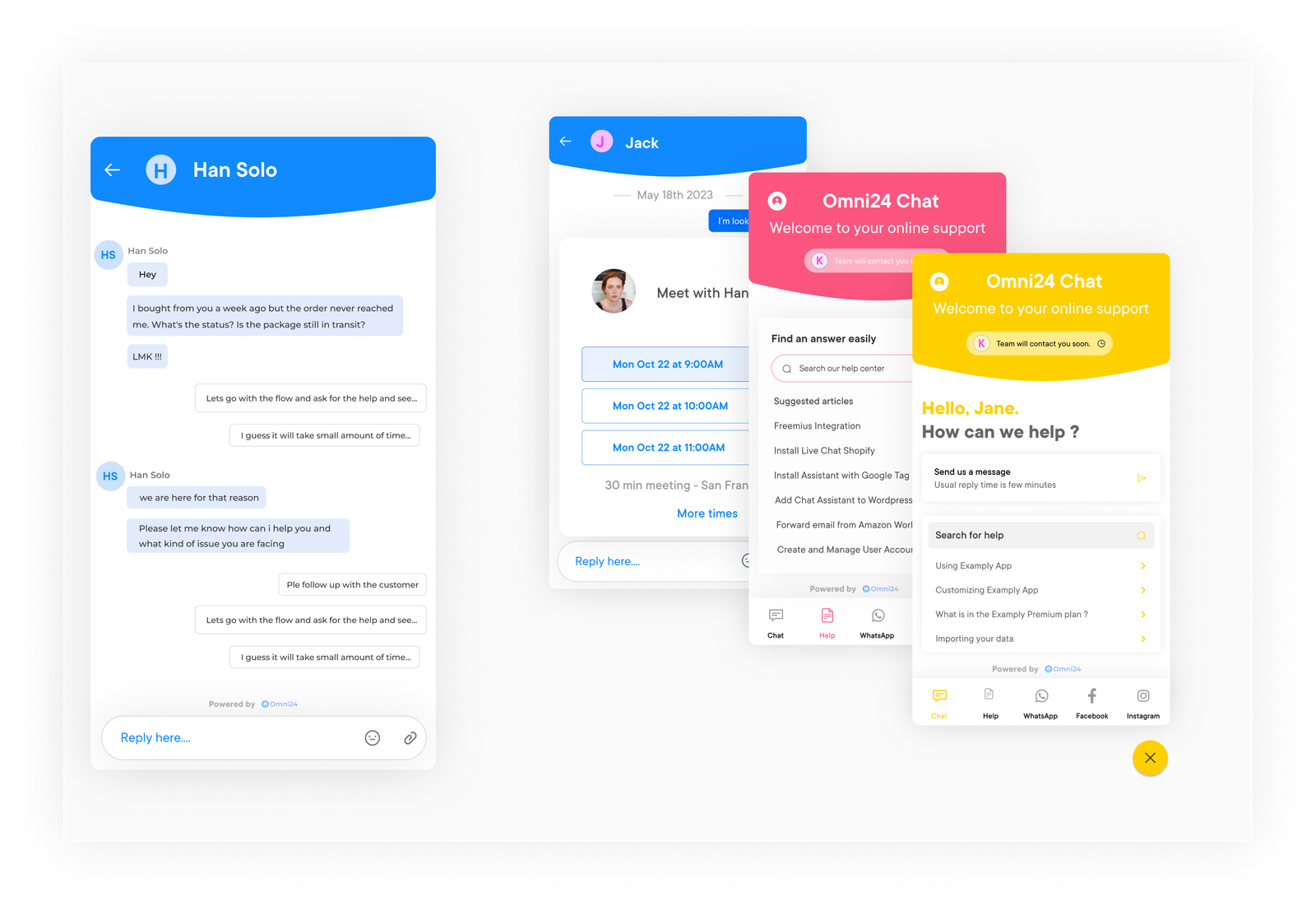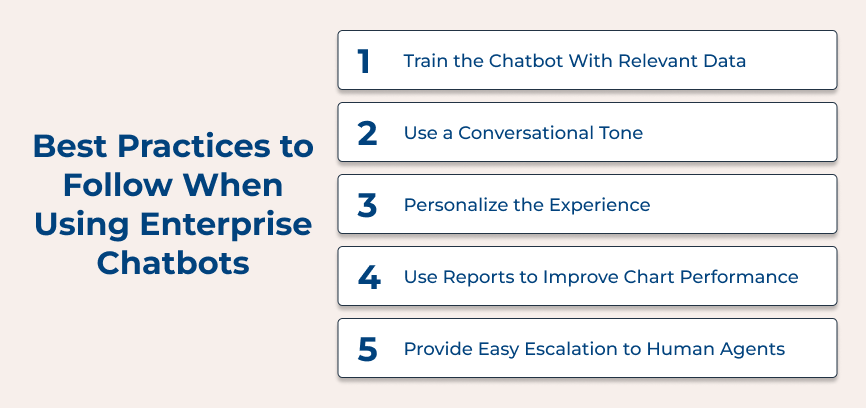1. Simple, Easy-To-Answer Questions
Building enterprise chatbot solutions can streamline customer service, enhance user experience and automate repetitive tasks. It’s crucial to take the right approach to ensure a successful implementation. One important step in building a chatbot is to start with simple, easy-to-answer questions.
Enterprises can set a strong foundation for their chatbot’s knowledge base by beginning with basic questions. The approach allows the bot to learn and provide accurate answers to more complex queries over time. Starting with complex questions can lead to confusion and inaccurate responses, damaging the user experience.
Pro tips:
- Understand your users: Identify the common questions and pain points that the users encounter. The understanding helps enterprises to prioritize the simple questions that the chatbot needs to be able to answer.
- Create a knowledge base: Compile a comprehensive database of simple, straightforward answers to common questions. The knowledge base should be well-organized and easily accessible for the chatbot to retrieve responses quickly.
- Implement natural language processing (NLP): Incorporating NLP technology allows your chatbot to understand and respond to user queries in a more human-like manner. It enhances the user experience and improves the accuracy of the responses.
2. Integrate Chatbots into your Omnichannel Setup
Integrating chatbots into the omnichannel setup is crucial for providing seamless and efficient customer support across various channels. Whether they reach out via social media, email or live chat, chatbots ensure that every interaction is handled promptly and accurately. It enhances customer satisfaction and loyalty, as customers receive consistent service regardless of the channel they use.
An example of the impact of integrating chatbots into an omnichannel setup can be seen in the retail industry. Imagine a customer who asks a question about a product on social media. A well-integrated chatbot will ensure the customer receives an instant response, providing the information they need to make a purchasing decision.
Pro tips:
- Ensure seamless integration: The chatbot should seamlessly transition between channels, preserving the context of the conversation. It creates a personalized and efficient customer experience.
- Train the chatbot extensively: A well-trained chatbot can handle various inquiries and provide accurate responses. Investing time and effort in training the chatbot will optimize its performance.
- Continuously monitor and update: Monitor the chatbot’s performance regularly and make necessary updates to improve its efficiency. It includes analyzing customer interactions, identifying areas for improvement and keeping up with changing customer needs.
3. Be Mindful of the Customer Journey
Being mindful of the customer journey is a vital step in building an enterprise chatbot. The customer journey refers to the path that a customer takes from the initial interaction with a brand to the final purchase or action. A well-designed chatbot that takes into account the customer journey can increase customer satisfaction and engagement, leading to higher conversion rates.
Imagine a customer who is browsing a website for a travel agency. They may have questions about different vacation packages, destinations or booking procedures. A chatbot that is mindful of the customer journey could provide personalized recommendations, offer real-time assistance in making reservations and even send follow-up messages after the trip to gather feedback or offer additional promotions.
Ways to implement:
- Map the customer journey: Identify the different touchpoints and stages that a customer goes through when interacting with the brand. It will help you understand where and how a chatbot can provide value.
- Personalize the chatbot experience: Customize the chatbot’s responses based on the customer’s preferences, behaviors and previous interactions. It makes the conversation more relevant and engaging for the customer.
- Integrate with other systems: Connect the chatbot with the CRM, e-commerce platform or other relevant systems to gather and utilize customer data. It will enable the chatbot to provide more accurate and personalized assistance, enhancing the customer journey.
4. Customize Enterprise Bots for Your Business
Enterprises must ensure to customize the chatbot to suit their specific business needs. Customization is vital as it allows the chatbot to align with the brand voice and deliver personalized interactions. Tailoring the bot’s responses and features to the unique requirements ensures the enterprise chatbot strategy provides relevant information to users.
Let’s say you run an e-commerce business. Customizing the chatbot enables it to understand product details, offer personalized recommendations and assist with order tracking. Such a level of customization can significantly enhance customer satisfaction by providing quick and reliable support.
Ways to implement:
- Define your business objectives: Clearly outline the purpose and goals of the chatbot. It will guide the customization process and ensure that the enterprise bot aligns with the overall business strategy.
- Adapt the bot’s language and tone: Customize the chatbot’s responses to reflect the brand personality. Whether your business is formal or casual, the enterprise chatbot platform should mimic the brand’s communication style.
- Integrate with existing systems: Connect the chatbot with the backend systems such as customer databases or inventory management. The integration enables the bot to access real-time information and provide up-to-date responses to user queries.
5. Track your Metrics—and Refine your Enterprise Bots
Building an enterprise chatbot is a multi-step process that requires careful planning and execution. Tracking metrics and refining the chatbot is important for several reasons. It allows enterprises to measure the chatbot’s performance and assess its impact on the business. Tracking metrics such as customer satisfaction, response time and user engagement, enables enterprises to make data-driven decisions.
Suppose an enterprise AI chatbot is designed to assist customers with common queries. Tracking metrics showed a high abandonment rate during a specific stage of the conversation. The insight prompts the leaders to refine the chatbot’s responses to provide more accurate and helpful information, eventually reducing abandonment rates.
Ways to implement:
- Utilize analytics tools: Use tools like Google Analytics or chatbot-specific analytics platforms to track and analyze metrics.
- Conduct user surveys: Gather feedback from users through surveys or feedback forms to understand their experience with the chatbot and identify areas for improvement.
- A/B testing: Perform A/B testing by creating different chatbot versions and measuring their performance to identify the most effective approach.
Features that Set Enterprise Chatbots Apart
Let us go through the key features that distinguish enterprise chatbots from the rest and discuss how they are transforming how businesses engage with customers.
